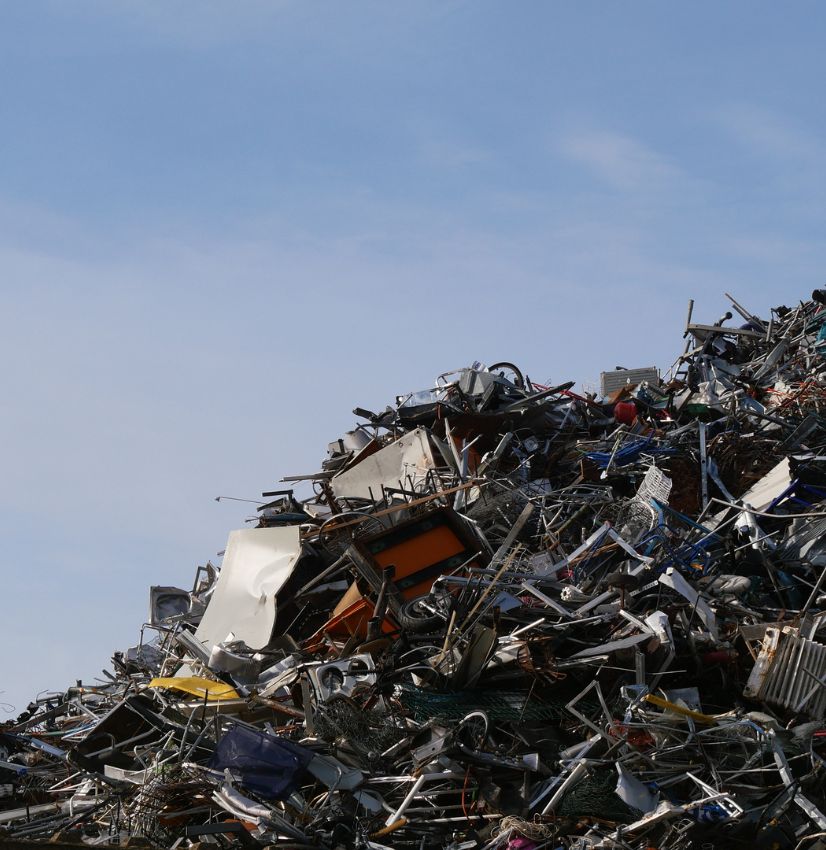
Have you ever wondered what happens to your old appliances when they stop working? Many people throw them away, unaware that they contain valuable materials like stainless steel, which can be sold for cash.
Scrapping stainless steel is not only a great way to earn extra money but also an environmentally responsible choice. Recycling metal reduces landfill waste and supports sustainable resource management.
In this guide, we’ll cover everything you need to know about scrapping stainless steel, including how to identify it, safely remove it, and sell it for the best price.
What is Stainless Steel and Why is it Valuable?
Understanding Stainless Steel Composition
Stainless steel is a metal alloy made primarily of iron, chromium, and nickel. The chromium content prevents rust and corrosion, making it a popular material for household appliances.
Why Stainless Steel is in High Demand
-
Durability: It is resistant to rust and corrosion.
-
Recyclability: It can be melted down and reused without losing quality.
-
Market Value: Higher-grade stainless steel contains valuable metals like nickel, increasing its scrap value.
Knowing what kind of stainless steel you have can help determine how much it’s worth.
Identifying Stainless Steel in Old Appliances
Before you start scrapping, you need to know where to find stainless steel in appliances. Here’s a quick guide:
Common Appliances That Contain Stainless Steel
-
Refrigerators – Doors, handles, shelves.
-
Dishwashers – Inner tub, door panels.
-
Ovens & Stovetops – Control panels, burners.
-
Washing Machines – Drum, outer casing.
-
Microwaves – Outer shell, internal components.
-
Sinks & Range Hoods – Entire structure.
Magnet Test: How to Check If It’s Stainless Steel
One easy way to identify stainless steel is the magnet test:
-
If a magnet sticks: It is likely ferritic stainless steel or regular steel, which has lower value.
-
If a magnet does not stick: It is high-grade stainless steel (304 or 316), which is more valuable.
This simple test helps separate stainless steel from other scrap metals.
How to Safely Dismantle Old Appliances for Stainless Steel
Essential Tools Needed
To extract stainless steel from appliances, gather these tools:
✔️ Screwdrivers
✔️ Pliers
✔️ Saw (for cutting metal parts)
✔️ Protective gloves
✔️ Safety goggles
Step-by-Step Dismantling Process
-
Unplug and discharge the appliance. Ensure there’s no electric current before dismantling.
-
Remove outer casing. Most appliances have stainless steel panels on the outside.
-
Separate stainless steel from other materials. Remove plastic, rubber, and insulation.
-
Sort and clean the metal. Clean stainless steel increases its resale value.
Safety Tips for Scrapping
⚠️ Be cautious of sharp edges when handling scrap metal.
⚠️ Avoid inhaling dust or harmful chemicals inside appliances.
⚠️ Properly dispose of non-metal components like refrigerants and electronics.
By following these steps, you can extract stainless steel efficiently and safely.
Where to Sell Stainless Steel for Maximum Profit
Once you’ve collected your stainless steel scrap, the next step is selling it.
Best Places to Sell Stainless Steel Scrap
💰 Local Scrap Yards – Many scrap yards buy stainless steel at competitive rates.
💰 Recycling Centers – Some offer better prices for bulk metal.
💰 Online Marketplaces – Try Facebook Marketplace, Craigslist, or eBay.
💰 Direct Metal Buyers – Some companies buy high-grade stainless steel in bulk.
How to Get the Best Price for Your Scrap
✅ Check Market Prices: Stainless steel scrap prices fluctuate based on supply and demand.
✅ Sort and Clean Your Scrap: Removing non-metal parts increases your payout.
✅ Sell in Bulk: Larger quantities often get higher rates.
Before selling, always compare prices from different buyers to maximize your profit.
Factors That Affect Stainless Steel Scrap Value
Not all stainless steel is worth the same. Here are key factors that determine its value:
1️⃣ Market Demand – Prices depend on global steel demand.
2️⃣ Type of Stainless Steel – 304 and 316 grades have higher resale value due to nickel content.
3️⃣ Weight and Volume – The more stainless steel you have, the more money you’ll make.
4️⃣ Purity and Contamination – Rust, dirt, or attached non-metal parts lower the value.
By understanding these factors, you can negotiate better prices for your scrap metal.
Environmental Benefits of Scrapping Stainless Steel
Scrapping isn’t just about making money; it also benefits the environment.
🌍 Reduces Landfill Waste – Prevents appliances from ending up in landfills.
🌍 Saves Energy – Recycling metal consumes less energy than mining new materials.
🌍 Promotes Sustainable Resource Use – Supports a circular economy where metals are reused.
By recycling stainless steel, you contribute to a greener planet.
Frequently Asked Questions (FAQs)
1. How can I tell if my appliance has stainless steel?
Use the magnet test—if the magnet doesn’t stick, it’s stainless steel.
2. Is stainless steel from appliances worth scrapping?
Yes! Stainless steel is valuable, especially higher-grade alloys like 304 and 316.
3. Do I need to remove screws and plastic before selling scrap?
Yes, removing non-metal parts increases the scrap’s purity and value.
4. Where can I sell stainless steel scrap?
Local scrap yards, online marketplaces, and direct buyers offer the best deals.
5. Are there any legal restrictions on scrapping appliances?
Some areas have regulations on refrigerants and electronics disposal. Always check local laws.
Conclusion: Is Scrapping Stainless Steel Worth It?
Scrapping stainless steel from old appliances is a profitable and eco-friendly practice. By understanding how to identify, extract, and sell stainless steel, you can turn discarded appliances into cash while helping the environment.
Whether you’re a hobbyist, a full-time scrapper, or someone looking to recycle, stainless steel offers a valuable opportunity.
🔥 Final Tip: Always check scrap prices and handle appliances safely for maximum profit and minimal risk.




